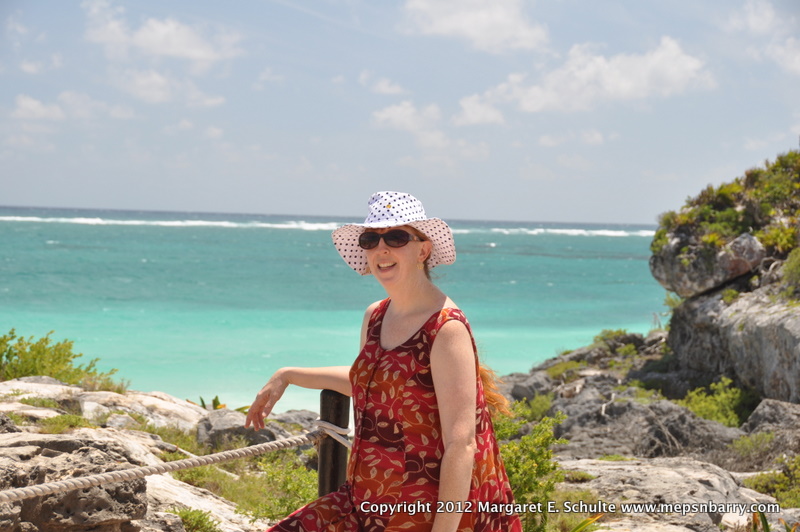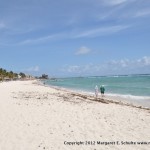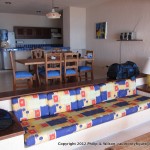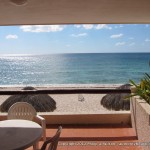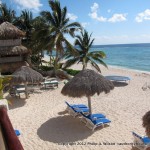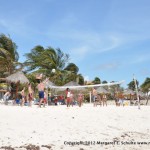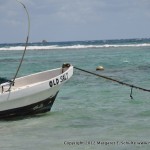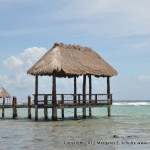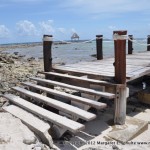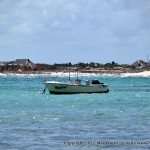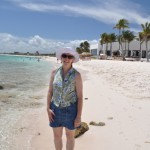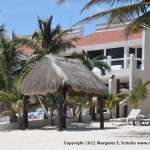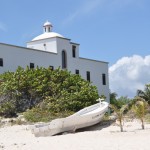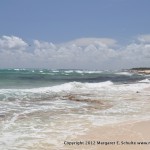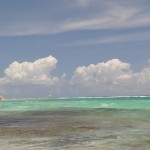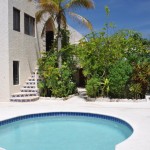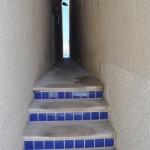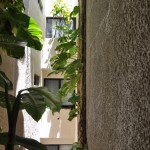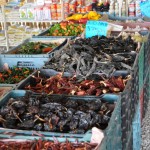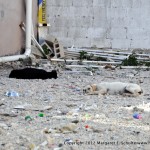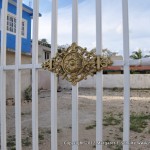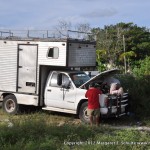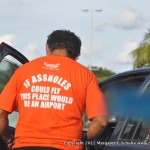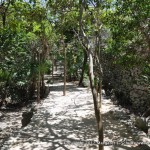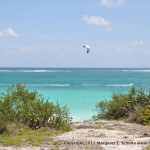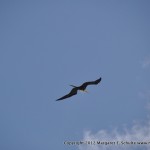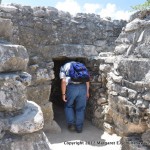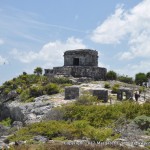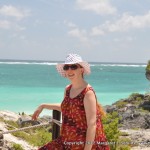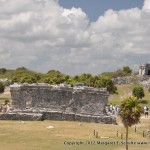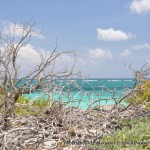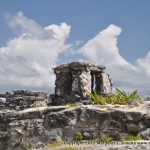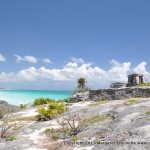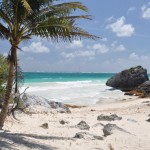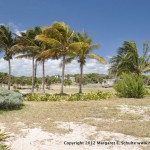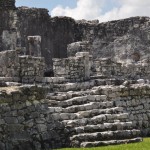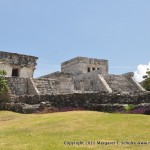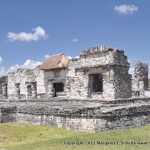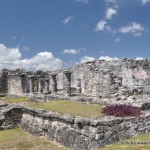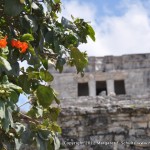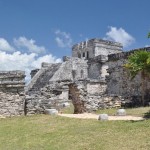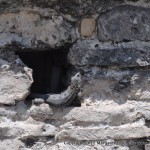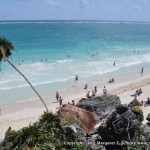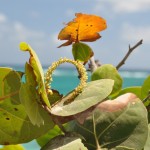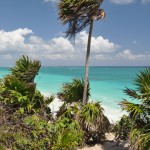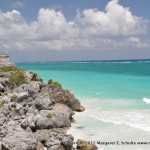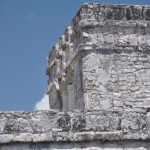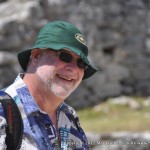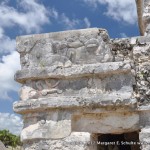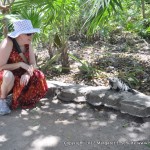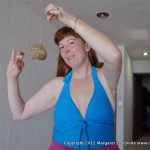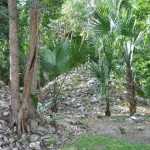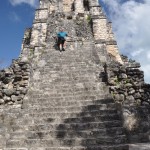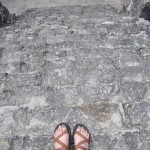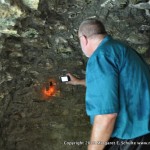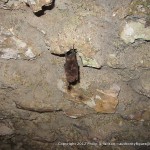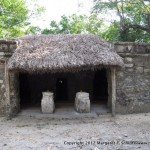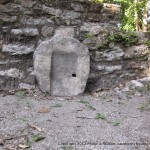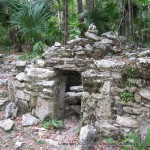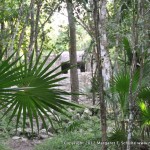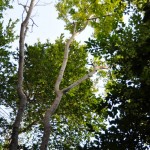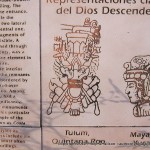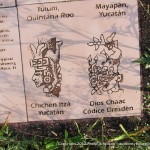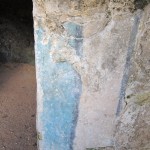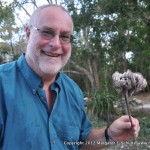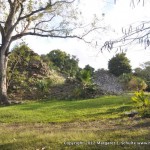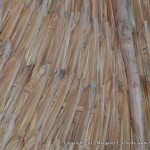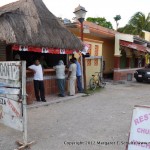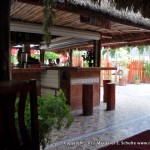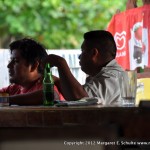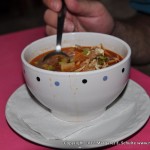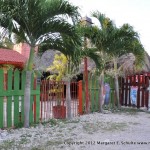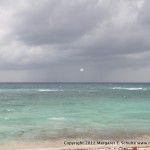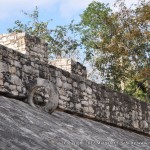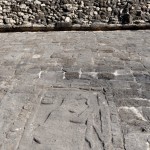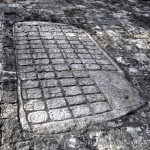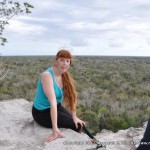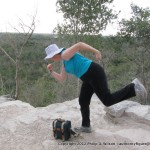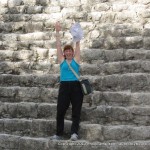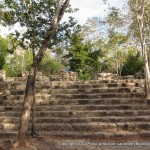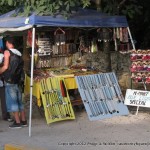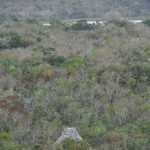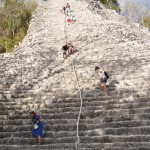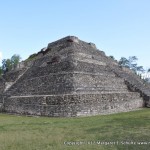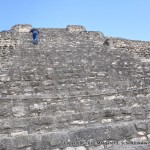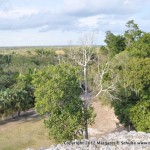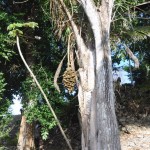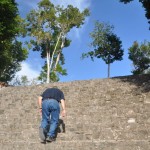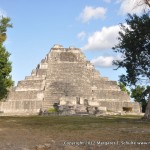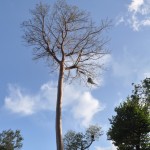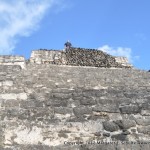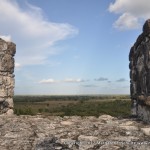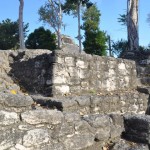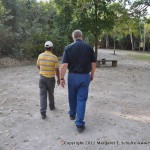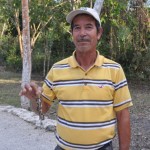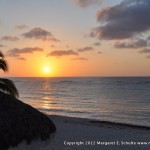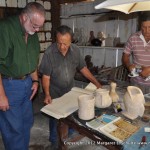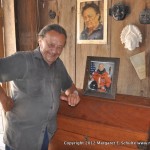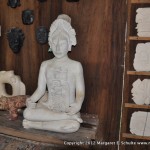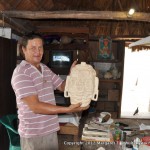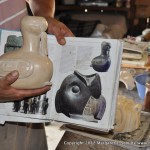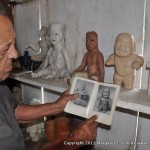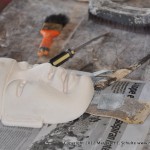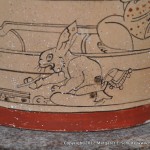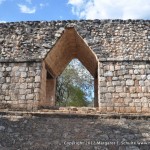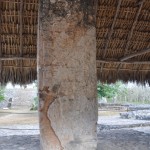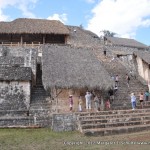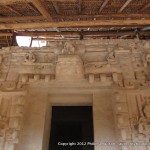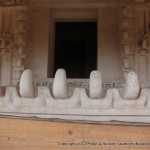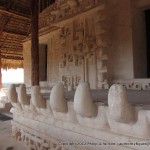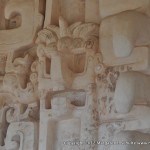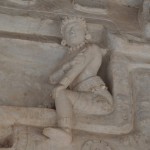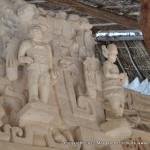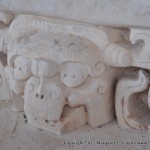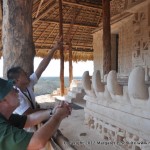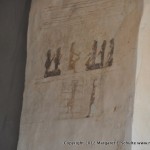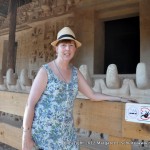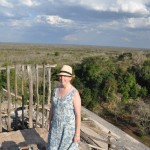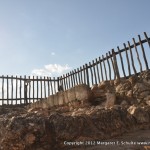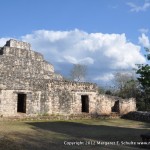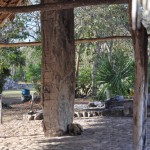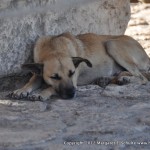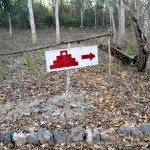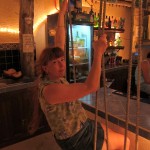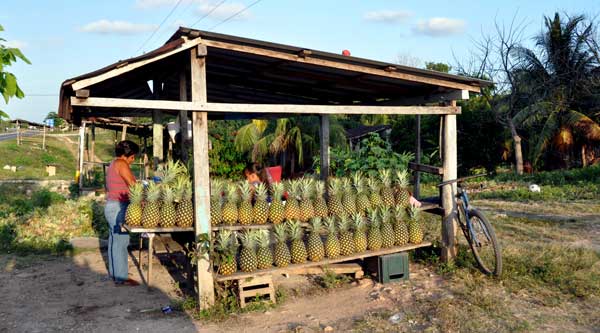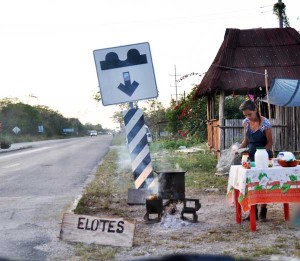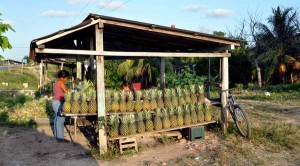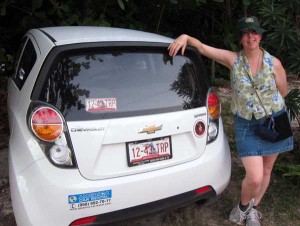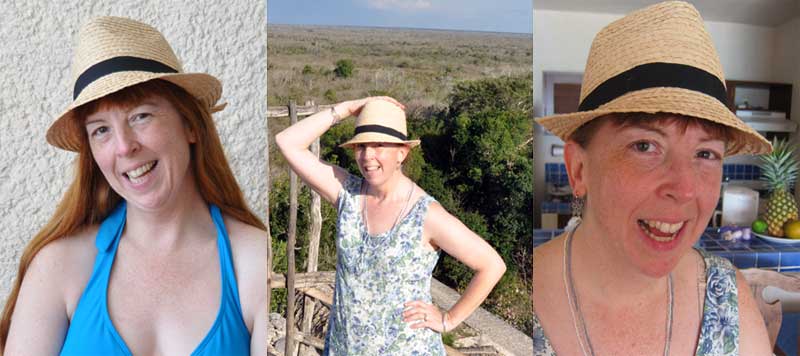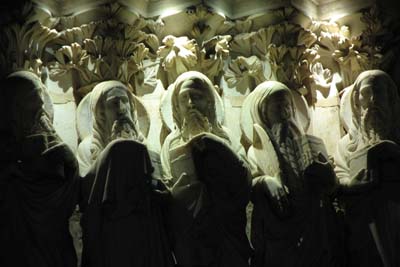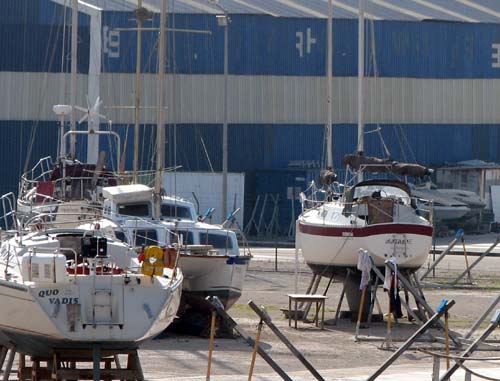We flew to Portugal on Christmas Day, December 25th, and we returned on Epiphany, January 6th. So it’s only fitting that I write twelve essays about the trip, one for each of the Twelve Days of Christmas. This is not a one-a-day travelogue, though, so the essays won’t actually correspond to one specific day.
How do you prepare for a trip to the other side of the world?
What should you pack? How will you deal with food and lodging? How much money will you need? How many people will speak English?
All of the travels I’ve written about on this site have been random walks. For those of you not familiar with this mathematical term, it’s also called a “drunken walk” or a “drunken sailor’s walk.” If you take a drunken sailor and track his motion, you’ll see that at each point, he can decide to lurch one step in any direction. If he goes left one step and right one step, he stays in the same place. At any time, he might keep zigging left, taking more left steps than right steps. Or he might tend to the right.
When we travel by car, van, or sailboat in the U.S. and Canada, Barry and I might go any direction, at random. Still, traveling slowly means we won’t go to sleep and wake up someplace really, really far away. As a result, we explore changes in climate and culture incrementally.
Not so with a trip to Portugal. We would step onto an airplane, and about a day and 6000 miles later, would step off into a place completely unknown to us.
You’d think this would make us plan our trip carefully. We would do our web research, read several guidebooks, and talk with friends who have been to Portugal. Then we’d devise an itinerary with lists of attractions, book hotel rooms, and arrange our ground transportation.
Nah, that’s too easy.
We bought one guidebook — I selected the Rough Guide, because it was the only one that mentioned Portimão, the town in the south of Portugal where the boat we were considering purchasing was located. I picked up a 3-by-5-foot map, and we tacked it on the wall. Then we got distracted with head colds, winter storms, power outages, and holiday parties.
We did do a little shopping for the trip. Based on recommendations from friends who have lived and traveled in Europe over the years, we decided to buy some clothes that were a little less thrift-store and a little less bright than our usual wardrobes. We didn’t want clothes that shouted “American Tourists,” so we had to leave the hot-pink fleece (Barry’s) and the leopard-print top (mine) at home.
Based on our prior travel experiences, we decided to travel light, super-light even. The one aspect of our trip to Brazil that we regretted was dragging around big wheeled bags on cobblestone streets. In Alaska, we’d reveled in 5-underwear-and-sock travel (referring to the practice of bringing no more than five pairs of underwear and socks and hand-washing them every few days).
A couple of days before leaving, we picked up two Rick Steves backpacks for $99 each. They’re the largest size you can carry on a plane, so you don’t have to check them, and they’re rectangular, with wide backpack straps that disappear into a zippered compartment, turning them into small soft-sided suitcases. It was Barry’s idea to buy them, and as a result, I called him a genius throughout the trip.

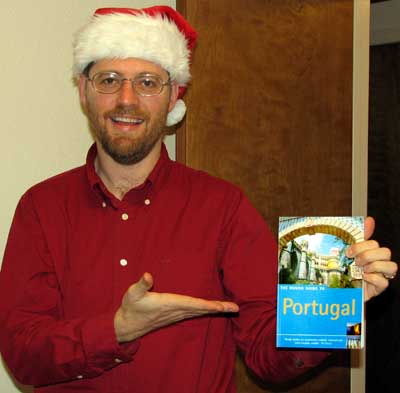
Meps and Barry showing off their Christmas goodies
We also picked up a couple of money belts that go inside your clothes, to protect passports and credit cards. As a result, we emerged unscathed, although shaken, from our one encounter with a pickpocket on the Lisbon metro.
We had planned to read the guidebook on the plane, so we’d have that rough itinerary by the time we got off. Instead, we napped, ate terrible airplane food, and watched movies.
When we arrived in Lisbon and Carlos met us, we still had only two items on our itinerary: See the boat in Portimão and attend Carlos’ New Year’s Eve party in Lisbon. As a result, our travels through Portugal, like our travels in the U.S. and Canada, became a random walk.
Carlos guided us through our first day in Lisbon and put us on the bus for Portimão. When we stepped off, without our friend to guide us, we needed two things: A bathroom and a place to stay. A stop in the local cafe provided the former, along with a pastry and a cup of lemon peel tea. While we sipped, we consulted our guidebook for a map and a place to stay. We were feeling confident; things were going according to plan.
The best travel stories happen when things do not go as planned. Both of the pensões in our guidebook were closed. It was night, and we had no place to stay. At least we didn’t have to pee.
Based on some well-meaning and poorly understood directions from a lady in a tourist office, we started walking down the quay away from town, wearing our packs, and we ran across two middle-aged Brits and a Frenchman. They had just come from the pub, and they were very merry. I mistook them for three drunken sailors.
“What the hell are you doing carrying those heavy things?” the British man asked.
When we told them we were looking for a cheap place to stay, the Frenchman jumped in. He knew just the place, but he very excitedly told us, using a lot of hand gestures, we were going the wrong way.
His English wasn’t very good, so he mixed it up with French and Portuguese. He took me by the arm and turned me around, back the way we had come. Then he gave me directions to a good, cheap pensão After that, he gave me a different set of directions to the same place — or maybe the directions were the same, using different words from different languages. He did this no fewer than five times, while Barry had an enjoyable chat (in English) with the British lady. The British gent got bored and wandered away (a drunken sailor’s walk).
Eventually, we made it back to town, went in a circles a few times, and discovered that we were walking under all kinds of cheap pensões, we just hadn’t noticed that a) all the signs were tiny and b) the signs up were up on the next floor, right above our heads.
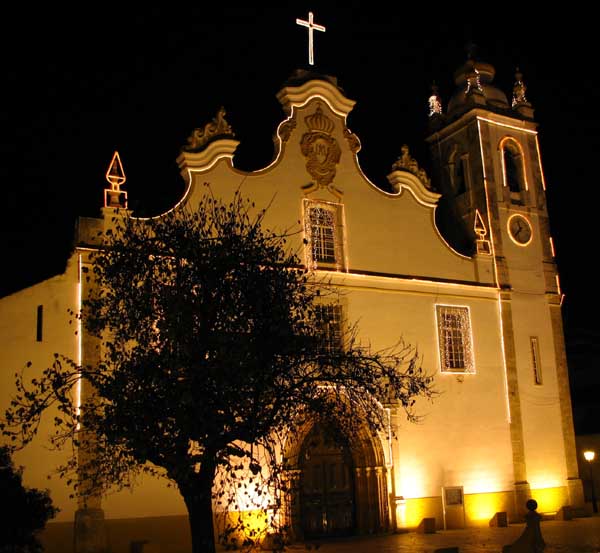
Portimão Cathedral at night
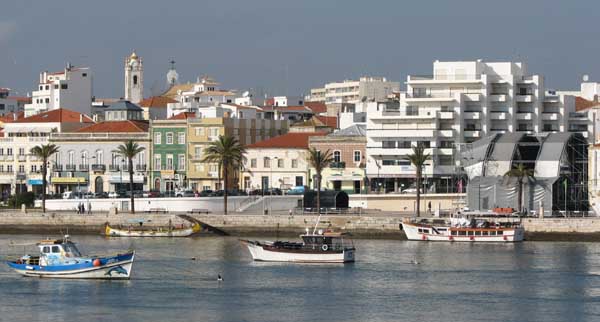
Portimão waterfront
When we had chosen one across the street from the cathedral, paid our 20 Euros, and set down our packs, I kissed Barry and called him a genius. Although I had been carrying the 20-pound bag around town for a couple of hours, it hadn’t been uncomfortable.
So far, so good. It was looking as though our trip to Portugal would follow the random walk pattern of our usual travels, although the language and cultural differences would make it more challenging than usual. Actually, given the state of the Frenchman and the two Brits, maybe the other phrase is more apt — we might have been sober, but our travels would still follow the pattern of a drunken sailor’s walk.
Coming soon…the second installment of The Twelve Days of Christmas: “Junk for sale.”

